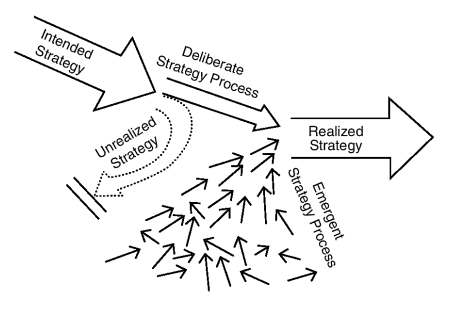The Learning End GameTrap
Perhaps you’ve re-committed to improve learning as the mission of your department (or next big initiative, or…). It’s well meaning but can be self defeating (or worse, self-fulfilling). The term leaves the impression that learning is the end game, your raison d’être. The real end game is performance; individual and organizational, defined in terms the business uses to measure itself. Sure, you don’t have control over all the factors that influence performance, but that doesn’t mean your solutions can’t be intimately connected to them. Thinking performance first is liberating and opens up whole new perspectives on the types of solutions you can and should be bringing to the table.
Antidote to the end game trap: Performance Thinking (Cathy Moore and Carl Binder have nice methods for deriving learning from performance needs)
The Planning Trap
I used to believe in the perfect annual plan all wrapped in MBO goodness, aligned and linked to organizational objectives. But over time I’ve come to two conclusions. First, the plans are rarely fully realized. The more interesting innovations and strategies emerged from responses to opportunities throughout the year. Second, senior teams rarely have their act together enough to create strategies and business plans that are meaningful enough to wrap a good training plan around. Highly analytic planning processes can deceive us into thinking we are planning strategically and improving future organizational performance.
To borrow an argument from Henry Mintzberg, strategy is actually a pattern embodied in day to day work more than an annual plan. Strategy is consistency in behaviour, whether or not intended. Formal plans may go unrealized, while patterns may emerge from daily work. In this way strategy can emerge from informal learning. I’ve always liked this image of planning from Mintzberg:

Antidote to the planning trap: Beware the best laid plans. Go ahead and work with your business units to create a simple training plan linked to whatever business plans they may have in place. But have a rock solid process in place to respond to the requests that will inevitably come that are not in line with the plan. Be ready to develop solutions to adapt quickly to whatever white water your company or industry happens to be swimming in. Be nibble and flexible in response to business changes. Watch for patterns and successes in that work and incorporate them in your training strategy.
The Measurement and Evaluation trap
Evaluation is a hot button that causes more wringing of hands and professional guilt than it should. Evaluation is meant to inform decisions. Some types training are simply easier to measure than others. Everything can be measured, but not everything is worth measuring. When you do evaluate use business metrics already in use and explore methods focused more on collecting evidence of success rather than definitive proof. Myopic and overly rigorous measurement drives out judgment and causes us to start measuring trees and forget about the forest. Our attempts at evaluation are often disproportionate to evaluation elsewhere in the organization (we only think everyone else knows their ROI).
Antidote to the measurement trap: Don’t emphasize short term ROI or cost reduction measures at the expense of true investment in the future that do not have immediate and calculable ROI. When you do evaluate use existing measures that the business uses to judge success.
The Technology Trap
We seem to be hard wired to line up enthusiastically behind each new wave of technology. Each wave has left behind tools and innovations that changed learning for the better (and also, embarrassingly, for the worse). It offers increasingly wondrous ways to improve access to learning, immerse employees in true learning experiences, share learning in collaborative spaces and extend the tools we use to do our work. And it offers equally wondrous ways to create truly disastrous learning experiences.
Antidote for the technology trap: Understand and embrace technology, especially game changing social media, but protect yourself from panacea thinking and keep your eye on the prize of improved performance. Success lies in the design not the technology.






[…] background-position: 50% 0px; background-color:#696969; background-repeat : no-repeat; } performancexdesign.wordpress.com – Today, 7:53 […]
I tottally agree with you, and I would add an extra trap: is to embrace informal and social learning with the traditional perspective of control and evaluation.
Edu: Good one. I agree. See some thoughts on that here.
[…] background-position: 50% 0px; background-color:#222222; background-repeat : no-repeat; } performancexdesign.wordpress.com – Today, 1:15 […]
[…] background-color:#222222; background-repeat : no-repeat; } performancexdesign.wordpress.com – Today, 11:04 […]
Reblogged this on red rabbit skills services | skills programme development and related services.
I really agree with your planning trap above, thanks for elaborating, most of the time this is exactly what happens, but it is one of those “hidden, unspoken” things.